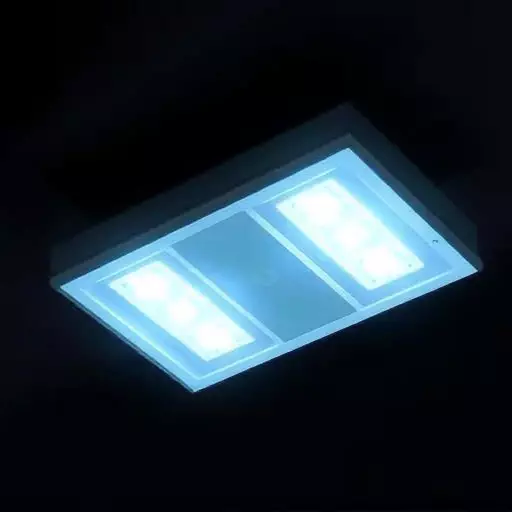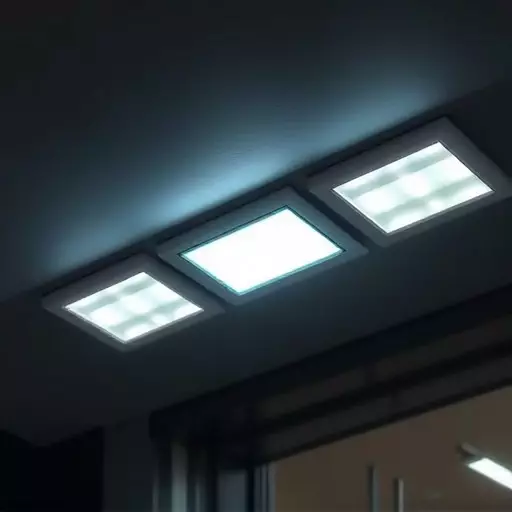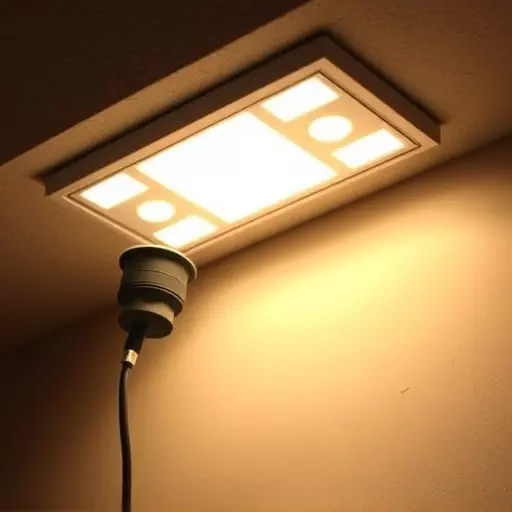Government buildings in Jacksonville, FL, require stringent emergency lighting systems for safety during power outages or emergencies. The benefits include enhanced security and accessibility, with efficient options like LED lights with photocell tech and battery backup. The meticulous installation process involves layout assessment, strategic light placement, and energy-efficient choices like LED and halogen options. Regular maintenance ensures optimal performance, making Jacksonville safer for residents and workers. Key types of emergency lights—LED, fluorescent, and halogen—offer distinct advantages based on building needs. Skilled technicians prioritize safety during installation while adhering to regulations. Ongoing testing and maintenance are crucial for reliable lighting solutions tailored to specific facility requirements.
In every government building, ensuring safety during emergencies is paramount. This is where reliable emergency light installation plays a crucial role in guiding occupants to safety. This comprehensive guide delves into the essential aspects of emergency lighting systems, particularly focusing on the installation process in Jacksonville and exploring various types like LED and fluorescent lights. Learn about the numerous benefits, critical safety considerations, and maintenance practices to ensure optimal performance. Discover why investing in an efficient emergency light installation process is a game-changer for any government facility.
- Understanding Emergency Lighting Requirements for Government Buildings
- The Process of Emergency Light Installation in Jacksonville
- Types of Emergency Lights: LED, Fluorescent, and More
- Benefits of Implementing Emergency Lighting Systems
- Safety Considerations During Emergency Light Installation
- Maintenance and Testing Procedures for Optimal Performance
Understanding Emergency Lighting Requirements for Government Buildings

Understanding Emergency Lighting Requirements for Government Buildings
In the event of a power outage or other emergency, government buildings must be equipped to ensure the safety and security of all occupants. This is where an emergency light installation process becomes crucial. Jacksonville, with its stringent building codes, requires that these facilities are fitted with reliable emergency lighting systems. The benefits of such installations are manifold, including enhanced safety for staff and visitors, improved accessibility for individuals with visual impairments, and reduced risks during evacuations.
There are various types of emergency lights available for installation, each designed to serve specific purposes. LED emergency lights, for instance, offer superior brightness and energy efficiency compared to traditional incandescent options. Photocell technology further enhances their effectiveness by automatically activating during power outages or low-light conditions. Additionally, battery-operated emergency lights provide backup power, ensuring uninterrupted illumination in case of prolonged outages. Understanding these requirements and selecting the right types of emergency lights for installation is essential for any government building aiming to uphold safety standards and comply with local regulations.
The Process of Emergency Light Installation in Jacksonville

The process of installing emergency lights in Jacksonville involves several critical steps to ensure safety and compliance with local regulations. It begins with a thorough assessment of the building’s layout, identifying potential hazards, and determining the optimal placement for emergency lighting fixtures. This includes evaluating escape routes, assembly points, and areas prone to power outages or other emergencies. Once the plan is finalized, the installation team proceeds with meticulous precision, mounting lights in strategic locations such as corridors, stairwells, and exit paths. These emergency lights come in various types, including LED and halogen options, each offering unique advantages like energy efficiency and bright, reliable illumination during crises.
The benefits of this process are manifold; well-installed emergency lighting enhances visibility, guides occupants to safety, and reduces the risk of injuries or panicked behavior. It’s not just about meeting building codes; it’s about ensuring the well-being of everyone within the government structure. Regular maintenance and testing further guarantee their efficacy when needed most, making Jacksonville a safer place for all its residents and workers.
Types of Emergency Lights: LED, Fluorescent, and More

When it comes to emergency lighting for government buildings in Jacksonville, understanding the different types available is key to ensuring a safe and effective escape route during power outages or emergencies. The most common options include LED, fluorescent, and halogen lights, each with its own advantages.
LED (Light Emitting Diode) lights are increasingly popular due to their energy efficiency, long lifespan, and robust performance in low-light conditions. They’re a smart choice for emergency lighting as they require less maintenance and offer excellent brightness. Fluorescent lights, though not as efficient as LEDs, are still a viable option known for their bright illumination and relatively lower cost. Halogen lights, while not as energy-saving or long-lasting, provide intense light output and are often used in specific areas requiring higher brightness levels immediately upon power loss. The choice of emergency light type should align with building layout, occupancy, and budget considerations during the installation process in Jacksonville.
Benefits of Implementing Emergency Lighting Systems

Implementing an emergency lighting system is a crucial step towards ensuring the safety and security of government buildings and their occupants. The Jacksonville emergency light installation process involves strategically placing lights designed to function during power outages or emergencies, providing clear exit routes and guidance. Benefits include enhanced visibility, improved evacuation efficiency, and reduced risk of accidents in low-light conditions. Not only do these systems help navigate the often chaotic atmosphere of an emergency, but they also play a vital role in maintaining order and calm among panicking individuals.
There are various types of emergency lights suitable for installation in government buildings, including LED exit signs, fluorescent lights, and photoluminescent panels. Each offers unique advantages in terms of energy efficiency, longevity, and brightness. LED exit signs, for instance, are highly visible and require minimal maintenance, while fluorescent lights provide reliable backup during prolonged power outages. Photoluminescent panels, on the other hand, charge during normal lighting conditions and emit a soft glow in the event of a power failure, offering a gentle yet effective guide to safety.
Safety Considerations During Emergency Light Installation

When undertaking the emergency light installation process in Jacksonville or any government building, safety should be the top priority. It’s crucial to ensure that all personnel involved are adequately trained and equipped with protective gear, as working with electrical systems can pose significant risks. The right lighting options, such as LED lights, offer numerous benefits during emergencies, including enhanced visibility, reduced heat output, and longer lifespan, ensuring clear navigation and effective evacuation protocols.
Proper installation is key to maximizing the effectiveness of these safety measures. Different types of emergency lights, like exit signs, battery-powered fixtures, and photoelectric sensors, serve diverse purposes in various building areas. Skilled technicians must consider factors such as lighting coverage, placement for optimal visibility, and compatibility with existing infrastructure to guarantee a seamless integration that meets all relevant codes and regulations, enhancing the overall safety and preparedness of the government building.
Maintenance and Testing Procedures for Optimal Performance

Maintaining and regularly testing emergency lighting systems is paramount to ensure optimal performance when it matters most. The emergency light installation process Jacksonville experts recommend a rigorous schedule for upkeep, including monthly testing of backup batteries, bulb replacement every 1-2 years, and overall system checks for any signs of damage or malfunction.
Regular testing not only guarantees the lights will function during an emergency but also helps identify potential issues early on, preventing costly repairs in an already stressful situation. Understanding the different types of emergency lights available—such as LED, fluorescent, or halogen—and their specific maintenance requirements is crucial for building managers. This knowledge enables them to select appropriate lighting solutions tailored to their facility’s needs and ensure they remain operationally ready.


